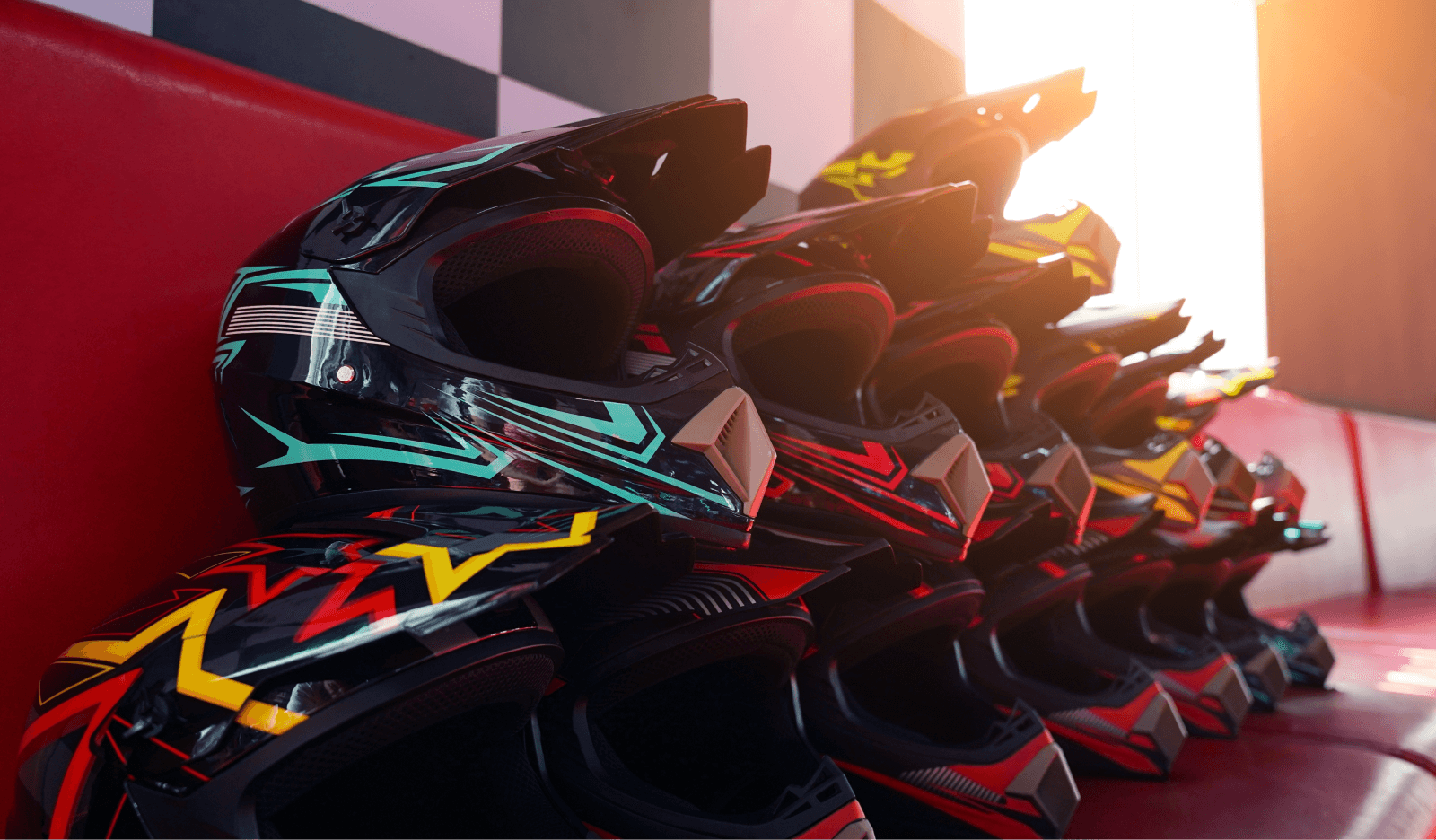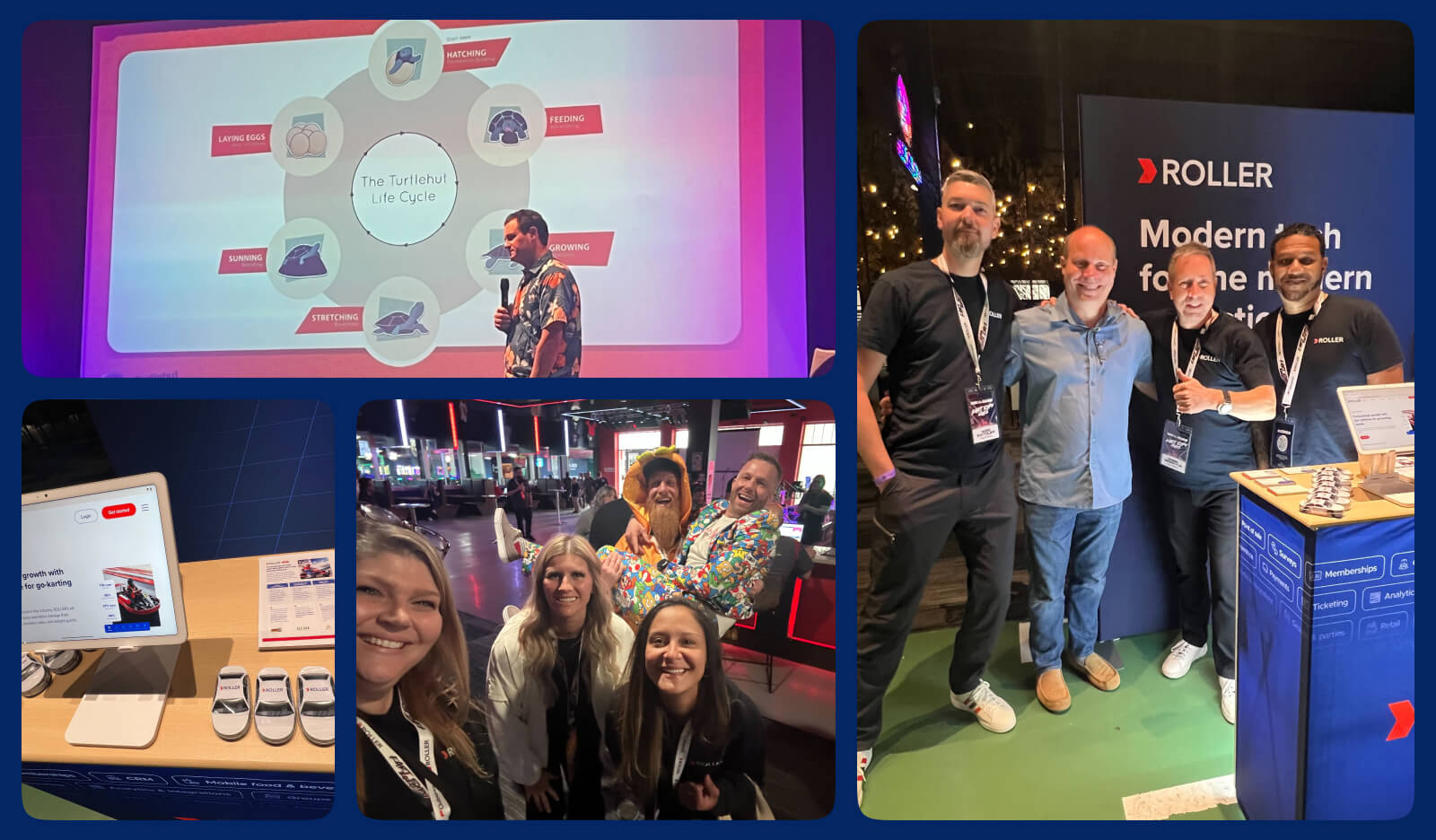Go-Kart Franchise Guide: How to Start, Run and Grow a Profitable Track

Whether you’re an entrepreneur looking to invest in a fast-paced, experience-driven industry or a family entertainment center (FEC) operator expanding your offerings, launching a go-kart franchise could be your next winning move.
With consumer interest in immersive, group-friendly attractions on the rise, the go-kart racing industry is thriving—and franchises offer a proven path to entry. In this guide, we’ll cover what it takes to start a go-kart franchise, how it compares to going independent, what kind of investment to expect, and the tools you’ll need to grow.
Why choose a go-kart franchise?
Starting a new business always comes with risks, but a go-kart franchise offers a unique opportunity to enter a growing industry with the support of an established brand. Instead of building your business from the ground up, franchising gives you a playbook. This helps you save time, reduce trial and error, and can increase your chances of success. If you’re looking for a fast-paced, family-friendly investment that blends excitement with solid earning potential, a go-kart franchise might be the perfect fit.
Market growth and audience demand
The go-kart industry is gaining serious traction—and not just among motorsports enthusiasts. Driven by a growing appetite for immersive, experience-based entertainment, go-karting has carved out a strong position in the broader family entertainment and leisure market.
The global go-kart market was valued at USD 146.8 million in 2023 and is projected to reach over USD 206.5 million by 2033, growing at a rate of 3.47%. This growth is being fueled by several key trends, including:
- Increased demand for group activities like birthday parties, team-building events, and family outings.
- A rising interest in motorsports and competitive karting leagues.
- Growing popularity of indoor go-kart venues, especially in urban centers where outdoor space is limited.
- Rising adoption of electric go-karts, which offer a quieter, cleaner, and more sustainable alternative to traditional gasoline models.
What makes go-karting particularly compelling as a business opportunity is its broad demographic appeal. Tracks attract kids, teens, and adults alike—and can cater to everything from weekend leisure visits to large-scale private events.
Proven business models
For entrepreneurs, franchising provides a fast track into this growing market. By partnering with an established brand, you gain instant access to operational support, brand equity, marketing materials, vendor relationships, and a proven business model. This allows you to skip many of the early-stage risks that come with starting a business from scratch—while still benefiting from the rising demand for high-energy, high-value experiences.
When you invest in a go-kart franchise, you typically gain access to:
- Established branding and marketing support that helps drive awareness and attract guests from day one.
- Vendor relationships for karts, venue equipment, and technology, sometimes at negotiated rates.
- Training programs and operational manuals to get you and your staff up to speed quickly.
- Ongoing support from your franchisor to troubleshoot challenges, refine your processes, and keep your business growing.
This built-in infrastructure reduces the learning curve and allows you to focus more on day-to-day operations, guest experience, and profitability.
Read next: Go-Kart Track Management 101: Tools and Tactics to Run a High-Performing Venue
Go-kart franchise vs. independent ownership
Should you go with a franchise or strike out on your own? Here’s a quick breakdown:
|
Criteria |
Franchise |
Independent |
|
Brand recognition |
Instant awareness Franchise brands are typically already known to customers, which can help you attract traffic faster. |
Build from the ground up You’ll need to create your own brand, design your logo, and build awareness through local marketing. |
|
Startup support |
Comprehensive help Franchisors typically provide training, manuals, vendor relationships, and site selection guidance. |
Do it yourself You’re responsible for everything—from negotiating leases to selecting equipment to training staff. |
|
Operational freedom |
Follow the playbook You’ll need to operate within brand standards and systems, often with limited room for personal tweaks. |
Full control You can choose your own pricing, attraction mix, technology, and policies, which is ideal for innovators. |
|
Software & equipment flexibility |
Usually locked in Many franchises require you to use specific software and vendors, which may limit customization. |
Choose your tools You can select the software, timing systems, and hardware that best fit your budget and goals. |
|
Cost structure |
Franchise fee and royalties Expect an upfront franchise fee, which typically ranges from $30,000 to $150,000+ depending on the franchise, and ongoing royalty payments based on revenue. |
Flexible costs No franchise fees or royalties, but you may face higher upfront costs for branding, marketing, and R&D. |
How to start a go-kart franchise: Step-by-step
Starting a go-kart franchise is an exciting opportunity—but like any business, it requires thoughtful planning, upfront investment, and the right operational tools. Here’s a breakdown of the steps involved:
1. Choose the right franchise brand
Start by researching go-kart franchise opportunities in your region. Consider the brand’s reputation, market presence, and customer base. Look closely at:
- Franchise fees and ongoing royalty structures
- Exclusivity terms and territory rights
- What’s included in the franchise package (for example, training, marketing, tech stack, vendor partnerships)
- The flexibility you’ll have with equipment, software, and day-to-day operations
You can also ask for a Franchise Disclosure Document (FDD) if available and speak with current franchisees to get a real-world perspective.
2. Understand the startup costs
Launching a go-kart franchise requires a significant upfront investment, and costs can vary widely based on brand, location, and scope. While it’s difficult to provide exact figures, here are some common cost categories to plan for:
- Franchise fee: These vary by brand and can range from $30,000 to $150,000+.
- Track buildout and venue fit-out: Often the largest startup expense, this category includes flooring, safety barriers, lighting, and construction.
- Go-karts: Whether electric or gas-powered, karts can range from a few thousand to tens of thousands of dollars each depending on the model.
- Technology, staffing, and operating capital: Budget for point-of-sale systems, marketing, insurance, employee wages, and ongoing maintenance.
Always consult directly with franchise providers and financial professionals to build a realistic budget and business plan.
3. Pick your location and secure a lease
The right location can make or break your franchise—both in terms of foot traffic and long-term profitability. Here are a few key factors to consider:
- Indoor vs. outdoor: Indoor tracks typically allow for year-round operation and offer more control over the environment (lighting, climate, etc.), but they tend to be more expensive to build and maintain. Outdoor tracks may save on buildout costs but limit your operating days due to weather conditions.
- Minimum square footage: Depending on your track layout and the additional attractions you plan to offer (e.g. arcade, F&B, party rooms), you may need anywhere from 20,000 to 50,000+ square feet. Also, make sure to account for guest flow, parking, and future growth.
- Zoning and permitting: Make sure the property is zoned for commercial entertainment use and that you understand any local requirements, such as sound ordinances, fire safety compliance, and accessibility codes.
- Foot traffic and visibility: Locations near entertainment districts, shopping malls, highways, or other high-traffic destinations tend to perform better, especially when complemented by other family-friendly venues.
- Urban vs. rural: Urban areas typically offer higher foot traffic and visibility but come with higher rent and competition. Rural or suburban locations may offer lower overhead costs and larger spaces, but they often require more marketing to drive traffic.
- Proximity to competitors: Research the local market to understand whether you'll be competing with nearby tracks or offering something new to the area. In some cases, a franchise brand may restrict opening too close to existing locations to prevent internal competition.
- Franchisor involvement: Most franchisors will want a say in location selection and approval. Some franchisors will even assist with site evaluation, demographic analysis, and lease negotiation to help set you up for success. Be sure to understand how much support is offered and how much control they retain.
4. Get your operations in place
From booking sessions to selling memberships and managing waivers, your software is critical. Whether you’re part of a franchise or running independently, a platform like ROLLER helps you:
- Sell timed tickets and memberships online
- Streamline check-ins with digital waivers and self-serve kiosks
- Track guest data for marketing
- Easily view analytics and performance insights
- Operate multiple venues from one dashboard
Read more: Go-Kart Software: The Complete Guide to Managing and Growing Your Karting Venue with Technology
Ready to race ahead?
The go-kart franchise model offers a unique blend of thrill and business opportunity—and with the right technology, you can hit the ground running.
Whether you’re launching your first track or managing multiple franchise locations, ROLLER is here to help you streamline operations, elevate guest experiences, and unlock long-term growth.
Want to learn more? Book a demo and discover how ROLLER helps go-kart venues drive success.
Frequently asked questions about starting a go-kart franchise
How much does a go-kart franchise cost?
Are go-kart franchises profitable?
What tools do I need to run a go-kart franchise?
In terms of equipment, you’ll need electric or gas-powered karts, timing systems, track barriers, helmets, and safety gear, as well as infrastructure like pit areas and charging stations (for electric karts). Don’t forget about ongoing maintenance tools and procedures—these are critical for both safety and longevity. Many operators also invest in cashless arcade systems, kitchen equipment, and self-serve kiosks if their franchise includes food and beverage or additional attractions.
To run a successful go-kart franchise, you’ll need more than just a fleet of karts and a track—you’ll need the right tools and systems to keep operations running smoothly and profitably. Look for software that handles online bookings, digital waivers, POS transactions, race scheduling, membership management, and guest communications—all in one place.
Do franchises let me choose my own software?
Related articles


Kart Expo 2025 Recap: Go-Karts and Growth-Focused Conversations
.png)
Enhance your guest experience
Get free education, tips and inspiration to help you run a successful venue.
